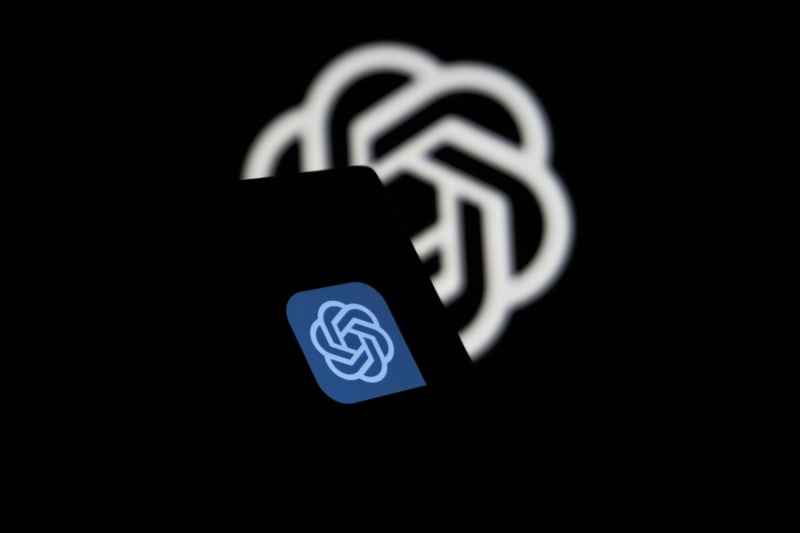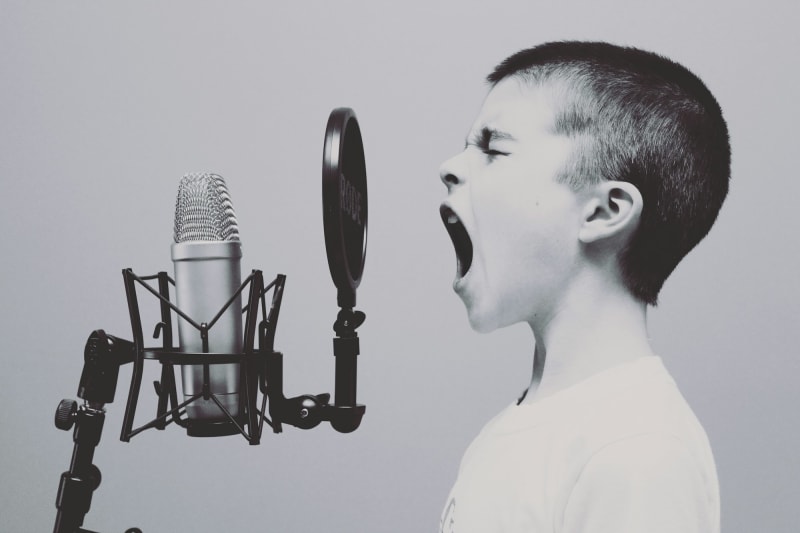Have you ever wished that you could simply talk to your computer or show it a picture to get things done? With ChatGPT's voice and image capabilities, that future is closer than you may think.
No more typing out long queries or struggling with building prompts. ChatGPT's advanced voice recognition and image understanding technologies are here to simplify and enhance our interaction with computers and apps.
In this article, we'll dive into the power of ChatGPT's voice feature, which enables seamless voice-based commands, queries, and conversations. We'll also explore how ChatGPT's image feature empowers users to effortlessly extract information from images and engage in a whole new way.
ChatGPT with voice & image recognition will change how we use AI forever!
OpenAI's ChatGPT recently introduced exciting new features that revolutionize user interaction. These new capabilities include voice and image functionalities, enhancing the user experience and expanding the potential use cases. Let's take a look into the details of ChatGPT's voice and image features, and how they are changing the game.
The easier we make the interface to AI the more use cases will emerge. We are still very early on in this journey.
ChatGPT's New Voice Capabilities
Photo by Jason Rosewell / Unsplash
Ever wondered what it would be like to have a conversation with an AI assistant? With OpenAI's latest update to ChatGPT, that dream is becoming a reality. ChatGPT's new voice capabilities are revolutionizing user interaction and taking the AI experience to new heights.
Yes, you can now talk to the ChatGPT prompt and it will respond back with realistic voice answers. Let's have a look at what's possible
- Introduction of Voice Interaction
Voice interaction is a game-changer, allowing users to communicate with ChatGPT through spoken commands rather than just text. This opens up a whole new level of convenience and accessibility, making the AI assistant feel even more natural and intuitive to use.
- Text-to-Speech Feature
One of the key components of ChatGPT's voice capabilities is its powerful text-to-speech (TTS) model. With this feature, ChatGPT can convert text responses into human-like audio, making the conversation feel more engaging and lifelike. Whether it's reading out a bedtime story or assisting with complex work-related tasks, ChatGPT's TTS feature adds a whole new dimension to the user experience.
- Collaboration with Voice Actors
To bring a touch of realism and variety to the voice interactions, OpenAI has partnered with talented voice actors. These actors lend their voices to ChatGPT, providing diverse options for users to choose from. The collaboration ensures that the audio responses are of high quality and deliver an enhanced conversational experience.
- Whisper Model for Speech Recognition
For accurate speech recognition, ChatGPT relies on OpenAI's advanced system called Whisper. This state-of-the-art speech recognition system ensures high accuracy in transcribing spoken commands, making voice interactions seamless and effortless.
- Voice Chat Feature Conversion
With ChatGPT's voice chat feature, users can engage in natural and dynamic conversations with the AI assistant. It enables back-and-forth exchanges, allowing for a more interactive and fluid user experience. Whether you need assistance in planning a trip or want to have a voice conversation while cooking, ChatGPT's voice chat feature has got you covered.
- Potential Risks and Mitigation
While the introduction of voice features adds a lot of value, it's important to consider potential risks. OpenAI is committed to ensuring that ChatGPT is deployed safely and securely. Measures are in place to prevent misuse and address any concerns related to the technology. OpenAI continues to iterate on the models and actively seeks user feedback to address any specific issues that may arise.
ChatGPT Image Capabilities
Photo by Mick Haupt / Unsplash
ChatGPT has expanded its capabilities beyond text-based prompt interactions to include image understanding and analysis. This exciting new feature opens up a world of possibilities for users, allowing them to interact with images in a whole new way.
Not only does ChatGPT recognize the image but also the context of the image. Let's take a look into the details of ChatGPT's image capabilities and explore how they are revolutionizing how we can use images with AI going forward.
- Image Interaction:
ChatGPT now supports image input, enabling users to upload images and have meaningful conversations about them. Whether you want to analyze a complex work-related graph or plan your next travel destination based on a scenic picture, ChatGPT's image interaction feature provides a seamless experience. This integration of visual elements adds a new dimension to conversations and enhances the user experience.
- Drawing Tools:
In addition to image interaction, ChatGPT also offers drawing tools that allow users to sketch directly in the interface. This feature is particularly useful for scenarios where verbal or text-based descriptions may not be sufficient. Users can now visually communicate their ideas, annotate images, or simply unleash their creativity within the context of their conversation.
- Image Context comprehension:
ChatGPT's image superpower will be the ability to understand the context of an image. For example, you upload an image of a meme. ChatGPT can then explain what meme it is and the references to the meme. The context of an image is as if not more important than just the recognition of images.
ChatGPT Voice and Image Recognition Use Cases
ChatGPT's new voice and image capabilities have opened up a world of possibilities for users across various domains. Let's explore some exciting use cases where these features are revolutionizing user interactions and providing a competitive edge.
- Enhancing Travel Experiences:
Imagine planning a vacation with just a voice command or a simple photo. ChatGPT's voice and image features allow users to interact with the AI assistant to book flights, find accommodation, and discover local attractions effortlessly. With the integration of the voice chat feature, users can have a natural conversation with ChatGPT, making travel planning more intuitive than ever.
- Streamlining Work-related Image Analysis:
In complex work environments, image analysis plays a pivotal role. ChatGPT's image recognition feature enables professionals to quickly analyze and interpret images related to specific areas such as data visualization, maps, or complex work-related graphs. This saves time and provides valuable insights that can drive informed decision-making.
- Personalized Audio Assistance:
ChatGPT's new text-to-speech feature, powered by OpenAI's advanced text-to-speech AI model, offers human-like audio delivery. Users can now enjoy a delightful experience, such as listening to their favorite stories as a bedtime companion or receiving audio summaries of important documents. This feature serves as a convenient voice companion for users, enhancing accessibility and convenience.
- Voice Translation for Multilingual Communication:
OpenAI's integration of Spotify's Voice Translation feature with ChatGPT amplifies its functionality in high-stakes domains. Users can now have multilingual conversations in real-time, breaking language barriers for productive communication. Whether it's a business negotiation or casual conversation, ChatGPT facilitates seamless communication between individuals speaking different languages.
💡
key Takeaway: ChatGPT's new voice and image capabilities are transforming user interactions across various domains. From enhancing travel experiences to streamlining work-related analysis and enabling personalized audio assistance, these features offer a competitive edge. Additionally, voice translation provides seamless multilingual communication, breaking language barriers. However, responsible usage and security measures remain vital to ensure the safe and ethical use of these cutting-edge AI capabilities.
Potential Risks and Considerations
Photo by Hiroshi Kimura / Unsplash
While ChatGPT's voice and image capabilities are undoubtedly exciting and game-changing, it's important to consider some potential risks and considerations associated with these features. OpenAI has made significant strides in ensuring user safety and mitigating possible issues, but it's crucial for users and businesses to be aware of the following points:
- Privacy Concerns:
With voice and image interaction, there are privacy implications to consider. Users may need to provide access to their microphone or camera, raising concerns about the security of personal data. OpenAI has implemented measures to protect user privacy, but it's essential for users to understand what data is being collected and how it is being used.
- Voice Authentication:
As voice command and voice conversation become more prevalent, there is a risk of unauthorized access if voice authentication is not implemented effectively. While ChatGPT's voice feature is designed to be user-specific, malicious actors may attempt to mimic voices or exploit vulnerabilities.
- Image Recognition Accuracy:
Image interaction opens up new possibilities for various use cases, but it's important to keep in mind that image recognition technology may not always be 100% accurate. Complex and ambiguous images may pose challenges, leading to potential errors or misinterpretation.
- Ethical Considerations:
The ability to generate human-like audio and interact through voice raises ethical considerations as ChatGPT becomes more integrated into users' lives. This includes potential misuse of AI assistants for deceptive purposes, such as generating fake audio or disseminating disinformation.
- Bias and Discrimination:
AI models have the potential to reinforce biases present in the data they are trained on. When it comes to voice and image capabilities, biases may manifest in various ways, including accents, gender, and race.
💡 key Takeaway: While ChatGPT's voice and image capabilities bring exciting new features to the AI landscape, it's important to be mindful of privacy concerns, authentication security, accuracy of image recognition, ethical considerations, and potential biases. OpenAI is actively working on
💡
key Takeaway: While ChatGPT's voice and image capabilities bring exciting new features to the AI landscape, it's important to be mindful of privacy concerns, authentication security, accuracy of image recognition, ethical considerations, and potential biases.
Conclusion
We are still early on in our honeymoon phase with ChatGPT and still blissfully oblvious to all the red flags everywhere. However, the introduction of voice and image capabilities in ChatGPT marks a game-changing moment in user interaction. Breaking down the barrier or typing and moving to voice and images is a significant advancement for the ChatGPT project.
OpenAI's roll-out plan ensures that these revolutionary features will reach a wider audience, opening up new possibilities for engaging and immersive experiences. With ChatGPT's voice capabilities, users can now experience a more natural and interactive conversation. The text-to-speech model and collaboration with voice actors bring a human touch to virtual interactions. And with Whisper, OpenAI's advanced speech recognition system, the accuracy and reliability of voice interactions are greatly enhanced.
On the image front, ChatGPT's image capabilities offer exciting opportunities for visual communication. The drawing tools provide a creative outlet, while the underlying technology, including multimodal GPT-3.
The future is bright but AI is brighter...
Follow me
If you liked this article, Follow Me on Twitter to stay updated!









Top comments (0)